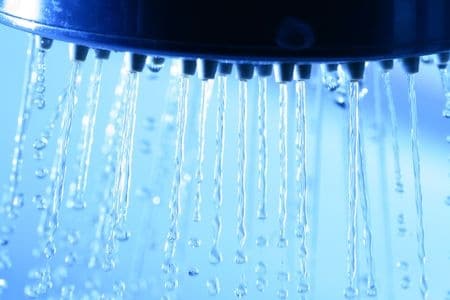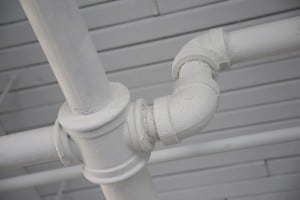Water Conservation – How Climate Change is Putting Seattle’s Water Supply at Risk
7 Water Conservation Tips to Try at Home
Seattle’s water plan has been called visionary, was estimated to be sound for at least 45 more years, and was predicted to be climate change-resilient, yet the latest round of droughts has left many at Seattle Public Utilities (SPU) predicting potential shortfalls. Here are 7 water conservation tips and how you can help.
New calculations run by SPU reveal that the water supply anticipated to be plentiful for nearly half a century will likely fall short. SPU now expects that the next 35 years may see a decline by as much as 50% in the water available for consumption by Seattle residents and businesses.
And by 2100, estimates anticipate a drop of 75% of the water reserves if all factors remain unchanged and climate change events occur as predicted. The SPU plan to utilize the Chester Morse and Tolt River reservoirs was intended to combat climate change, but may fall short.
SPU has occasionally called for residents to cut back on water usage by as much as 10% to prevent shortages. While the climate modeling that predicted these shortfalls is not set in stone and is strictly an estimate, conservation is never a bad idea.
Check out these seven tips to painlessly conserve water and protect Seattle’s water reservoirs…
#1 Choose showers over baths
We all know that baths take up more water than efficient showers, but if you must have a hot soak, plug the drain right away and then adjust by turning up the hot taps rather than allowing cold water to spill down the drain. Also in the bathroom, turn the water off while you’re brushing your teeth or washing your face. Low-flow showerheads can help and if you’re really gung-ho, put a bucket in the shower with you to capture water that can be used to water plants indoors and out.

#2 Wash only full loads of dishes and clothing
It can be tempting to run a small load of dishes or clothing so you don’t face dirties piling up, but this is not efficient. Scrape your dishes and use scraps for composting where you can rather than rinsing dishes and let your dishwasher do the work (newer dishwashers are marvelous at cleaning messes). Save laundry for full loads. Rewear jeans and reuse towels – save laundering for things that are smelly and dirty. Hang up your clothes after work and school to get more than one wear between laundering.

#3 Choose drought-tolerant landscaping
Some flowers and hedges are more water-needy than others. Ask at your local nursery which plants are a good fit for the Pacific Northwest climate and group plants by water and sun requirements to conserve resources. Many drought resistant plants can live on rainfall alone. Composting and mulching can also cut back on the need for water since they absorb and hold onto water and prevent drying. Click here for a Seattle.gov guide to choosing the right plants for your yard.

#4 Collect rainwater
Collecting rainwater is a preferable method for watering plants and doing outdoor water tasks. A rain barrel is a low-cost investment that can provide water for rinsing your car, watering plants and trees, and more. Grass and plants thrive from rainwater more so than they do from tap water and can reduce erosion. Rainwater can also be a great option for washing pets and other outdoor uses. Some rainwater enthusiasts swear by captured precipitation for washing their hair for soft and shiny hair.

#5 Cut down on grassy patches
The larger the grassy parts of your yard, the greater the need for water. Consider redoing your landscaping with less grass and more elements that don’t need watering. Gravel patches, decorative mulch areas, and increasing your deck or patio are all great ways to cut back on grass. The EPA says 30-60% of urban fresh water goes to keeping grass green. Another plus of cutting back on grass is that you’ll spend less time and money on lawn maintenance – and you’ll have less mower noise.

#6 Think before you turn on a tap
There are myriad other ways that you can save water (and money on your water bill). Defrost food in the refrigerator rather than in water – plus this is less likely to grow bacteria. Don’t rinse driveways and sidewalks with a hose – use a blower instead. Get drinking water from your fridge dispenser or keep a chilled jug in the fridge rather than letting the tap run until it gets cold. Plus, teach your kids water smarts from the get-go.

#7 Check for leaks and don’t ignore warning signs of water line problems
You may be wasting water and don’t realize the impact if you have a running toilet, dripping pipe, or leaky faucet. Check periodically for soft spots in your lawn that can indicate a pipe leak. Look for mold in your house or basement that can indicate water leaking in unseen areas. Check your crawl space occasionally to ensure pipes are in good order. Check your pipes after a freeze to make sure you didn’t end up with a burst pipe that can run up your bill and waste water.

If you have a suspected leak, damaged water line, or drainage problem, don’t ignore the warning signs – call Complete Trenchless today. Our trenchless solutions for residential and commercial water, sewer and drain repair and replacement ensures a faster, more affordable repair with minimized disruption to your landscaping.
Call 206.259.0415 to reach Complete Trenchless in Seattle.









